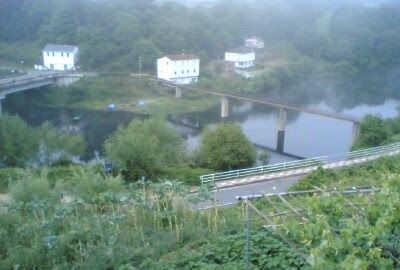Fisterra (or Finisterre) is the end of the world during the medieval times prior to Columbus's discovery of the New world. Many pilgrims in the past continued their journey to Fisterra (another 3 days). There they will pick up dead clam shells along the coast to prove that they had been to the ocean.
I had plan a 5 days buffer for my journey and had actually arrived in Santiago 1 day earlier. Unfortunately I couldn't walk to Fisterra because to my ankle.
Instead, I'd managed to rent a car in Santiago to be returned to Madrid 6 days later (my flight departing Spain), giving me more than ample time to explore Galicia.
My first stop. Fisterra.

The peninsula and the town of Fisterra in sight!

That's me outside the albergue in Fisterra. Apparently you can get a compostela for walking to Fisterra if you make the 3 days journey.

A waymarker with 0.0 kilometer. The journey ends here.

The view of the edge of the peninsula. A pilgrim sitting on a rock reflecting on her journey at the edge.

The lighthouse at Cape Fisterra and the last cross near the edge.

A pilgrim burning his clothes and boots, symbolizing the beginning of a new life. In the past, the pilgrim will most likely keep their pilgrim clothes so they can be buried with it for their journey in their afterlife.

A view of the dark ocean. No wonder in the old days this was considered the end of the world, or land's end. It really feels that way when one is there.I stayed there a good hour contemplating on my own pilgrimage and my life's journey so far.

Following that, it's a drive back to the town of Fisterra, stopping at the Church of Santa Maria das Areas, with the rental car in the foreground (Citroen C2 diesel).

Back to the town for lunch and also to pick up my own shell.


















































